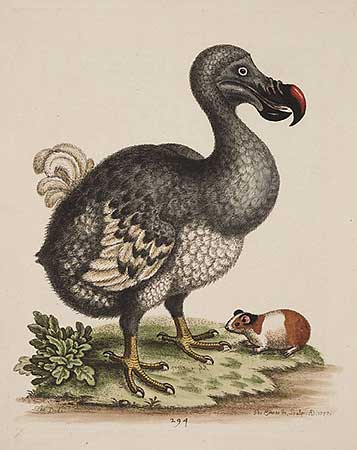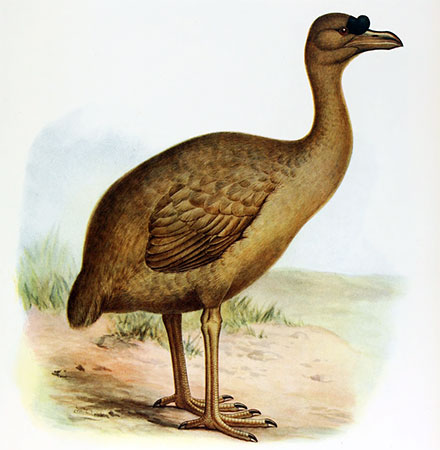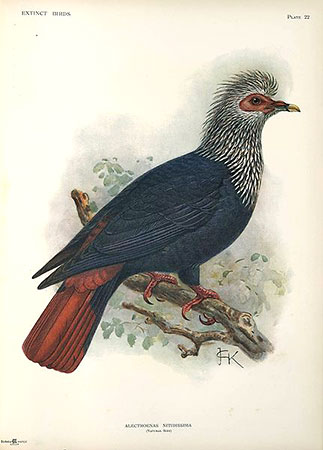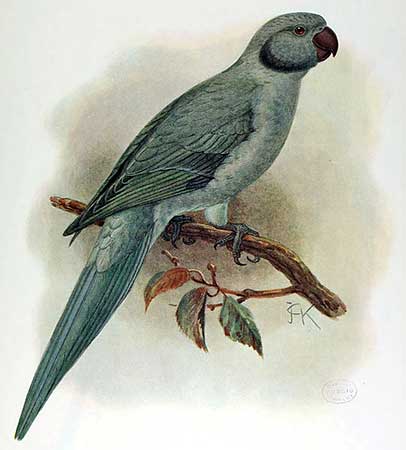
Text by Nicole Bouglouan
Illustrators and Origin of illustrations:
Dodo - Raphus cucullatus - Dronte de Maurice
George Edwards (1694-1773).
Gleanings of natural history, exhibiting figures of quadrupeds, birds, insects, etc (1760), plate 294. London Royal College of Physicians. (from http://images.library.wisc.edu/DLDecArts/EFacs/NatHistEd1/NatHistEd06/M/0194.jpg Digital Library for the Decorative
Rodrigues Solitaire - Pezophaps solitaria - Dronte de Rodrigues
Frederick William Frohawk (1861–1946)
Extinct birds : an attempt to unite in one volume a short account of those birds which have become extinct in historical times : that is, within the last six or seven hundred years : to which are added a few which still exist, but are on the verge of extinction. By Lionel Walter Rothschild, 2nd Baron Rothschild (8 February 1868 – 27 August 1937). https://archive.org/stream/extinctbirdsatte00roth#page/n325/mode/2up
Mauritius Blue Pigeon - Alectroenas nitidissimus - Founingo hollandais
John Gerrard Keulemans (1842–1912)
The Ibis ser. 3, vol. 5
https://archive.org/stream/ibis53brit#page/342/mode/2up
Newton’s Parakeet - Psittacula exsul - Perruche de Newton
John Gerrard Keulemans (1842–1912)
The Ibis ser. 3, vol. 5 https://archive.org/stream/ibis53brit#page/342/mode/2up
Rodrigues Starling - Necropsar rodericanus - Etourneau de Rodrigues
John Gerrard Keulemans (1842–1912)
Extinct birds : an attempt to unite in one volume a short account of those birds which have become extinct in historical times : that is, within the last six or seven hundred years : to which are added a few which still exist, but are on the verge of extinction. By Lionel Walter Rothschild, 2nd Baron Rothschild (8 February 1868 – 27 August 1937). https://archive.org/stream/extinctbirdsatte00roth#page/n281/mode/2up
1907 restoration by John Gerrard Keulemans (left), partially based on a specimen that turned out to be an albinistic Grey trembler (right)
Sources of the text:
PIGEONS AND DOVES by David Gibbs, Eustace Barnes and John Cox - Pica Press Sussex - ISBN: 1873403607
Vanished and Vanishing Parrots: Profiling Extinct and Endangered Species De Joseph Forshaw, Frank Knight – Editeur: Csiro Publishing, 2017 – ISBN: 0643106499, 9780643106499 - 352 pages
Extinct Birds De Julian P. Hume – Editeur: Bloomsbury Publishing, 2017 – ISBN: 1472937465, 9781472937469 - 560 pages
L’ENCYCLOPEDIE MONDIALE DES OISEAUX - Dr Christopher M. Perrins - BORDAS - ISBN: 2040185607
Birdlife: Mauritius’s endemic species
Wikipedia, the free encyclopaedia
Researchers Reveal Unique Wing Weapon of Extinct Bird Rodrigues Solitaire
The two Dodos - The Dodo of Mauritius and the Solitaire of Rodrigues
The other Dodo: Extinct bird that used its wings as clubs
Contemporains disparus ou menacés: Pigeon hollandais
Mauritius and Rodrigues Islands
Description and biology of the extinct endemic species
Mauritius is an island in the Indian Ocean. Like on many other islands, several bird species were endemic. Today, only nine species are remaining. But following important declines caused by habitat loss and predation by introduced mammals, these species are now recovering slowly. Conservation efforts, captive breeding programs and reintroduction in the wild were indispensable to help the nine endemic to recover good numbers.
But other endemic birds did not have that chance and disappeared from the island, leaving only some information on their appearance and biology, too little for our imagination to see them as they really were.
They were considered only as food sources by the early settlers, especially the Dodo, a large, flightless bird entirely fearless of humans because it evolved in isolation from predators. An easy prey...
The Dodo (Raphus cucullatus) was living and nesting on the ground. From studies of the leg bones, it was able to run fast though the dense, pre-human landscape. The wings were small but they may have been used for balance and displays, like extant pigeons. The large, hooked beak was probably used in territorial disputes.
We do not know what the habitat of this species was, but some old descriptions suggest that the bird occurred mainly in wooded areas on the drier coastal regions of S and W of the island.
Most remains of this bird have been found in a swamp (Mare aux Songes) close to the sea in SW Mauritius, where a high diversity of plant species was growing. Other remains have also been found in highland areas inside caves, indicating its presence on mountains.

Dodo
George Edwards (1694-1773)
The Dodo subsisted on fallen fruits, and probably nuts, seeds, bulbs and roots. Referring to its relative the crowned pigeons, it has also been suggested that crab and shellfish have been eaten. Several sources state that this large bird used “gizzard stones” to aid the digestion of some hard food items.
The Dodo probably nested on the ground. The egg was described in 1651 by François Cauche, a French explorer. Only a single white egg was laid on the grass, and the nest was in the forest.
We do not know how the chicks were fed, but as the Dodo shows a large crop, we can suggest that this morphological feature was used for food storage and to produce crop milk, like the related pigeons.
A study suggested that the breeding season was around August. The chicks were growing rapidly to reach the adult size and the sexual maturity before the Austral summer and the period of cyclones.
The Dodo was betrayed by its lack of fear in front of humans. The bird was taken as easy food and killed. In addition, the introduced rats, pigs and monkeys destroyed the eggs in the nests. The Dodo became a rare bird and the last one was killed in 1681.
The Rodrigues Solitaire (Pezophaps solitaria) was endemic to Rodrigues Island, E of Madagascar in the Indian Ocean. It is now extinct. It was described by François Leguat who lived on this island, and the species was first mentioned during the 17th century.
Closely related to the Dodo, it was genetically placed within the family Columbidae and both species formed the subfamily Raphinae. Their closest living genetic relative is the Nicobar Pigeon.
The Rodrigues Solitaire male was much larger than the female, and about the size of a swan. The sexual dimorphism was pronounced.
The plumage was grey and brown, but the female was paler and duller than the male. The beak was slightly hooked, with a black band at base described now as a “frontlet”, an ornamental knob consisting of two or three lobes. This knob was larger in males. Neck and legs were long.
More than 50% of specimens did not have knob. They probably were immature birds or birds without territories.
Both sexes possessed small “balls” at the base of each wrist, probably used as carpal spurs in defence behaviour.
The Rodrigues Solitaire was taller and more slender than the Dodo, with smaller skull and beak. Both species have evolved to adapt to flightlessness.

Rodrigues Solitaire
Frederick William Frohawk (1861–1946)
The diet of the Rodrigues Solitaire included dates, and probably seeds and leaves. Like the Dodo, it used “gizzard stones” that may imply a similar diet.
This species nested on the ground. François Leguat described the nest built in a clean place and made of some palm leaves. This structure was slightly elevated.
Only one egg was laid, much bigger than that of a goose. Male and female incubated in turns during seven weeks. The young depended on adults for food for several months.
Both adults were territorial and did not suffer any other bird of their species near the nest-site. The large difference of size between male and female suggests that the species was not monogamous but perhaps polygynous. The males performed wing-rattling behaviour, suggesting lek-mating.
The most detailed description of the Rodrigues Solitaire in life and its behaviour is the description made by François Leguat who was the leader of a group of French refugees abandoned on Rodrigues in 1691-1693. His observations are some of the first cohesive accounts of animal behaviour in the wild.
The Rodrigues Solitaire became extinct probably between the 1730s and 1760s. At this period, the tortoise trade has led to the destruction of the habitat by traders, burning the vegetation and hunting solitaires, while introduced pigs and cats preyed on eggs and chicks. In 1755, the Rodrigues Solitaire was known to survive only in remote areas of Rodrigues Island. In 1761, the species was no longer found on the island.
Subfossil bones were found in a cave in 1786, but more complete remains were discovered in 1874, allowing Alfred and Edward Newton to describe the osteology of this bird. The term “solitaire” bas been used for this species, due to its solitary habits.
The Mauritius Blue Pigeon (Alectroenas nitidissimus) was endemic to Mauritius in the Indian Ocean. It was first mentioned in the 17th century and was described in 1782 by the French naturalist Pierre Sonnerat. Subfossil remains were found in the Mare aux Songes swamp in 1889, and more were collected around 1900, probably near Le Pouce Mountain and Plaine des Roches.
The French name “Founingo Hollandais” derives from the red, white and blue colours of the plumage, reminding the Dutch flag, whereas the French flag did not yet have these colours.
The Mauritius Blue Pigeon was a fairly large pigeon (30 cm) with pearly-white head, neck and breast. There were white elongated feathers with stiffened barbs around head, neck and breast. The body plumage was blue, with dull greyish-blue belly, dark metallic blue wings and maroon to reddish tail feathers and both upper and undertail coverts. The outermost rectrices were partially dark blue.
On the head, the reddish-orange eyes were surrounded by a patch of bright red carunculated orbital skin. The bill was greenish with dark tip. Legs and feet were slate-grey, but they are often red on several illustrations because they were painted when the original colour faded.
The Mauritius Blue Pigeon was the largest of the genus Alectroenas.

Mauritius Blue Pigeon
John Gerrard Keulemans (1842–1912)
Illustrations by G. Haasbroeck show the displaying male raising the elongated white feathers into a ruff, like other blue pigeons are doing too.
The Mauritius Blue Pigeon was probably living in pairs or in small groups in mountainous evergreen forests. It was a forest bird, but it was also seen on riverbanks eating molluscs. Fruits and nuts were the major part of its diet, although freshwater molluscs and snails are taken by other species of pigeons and could be part of its diet too.
The decline of the Mauritius Blue Pigeon was caused by deforestation, and only small patches of forest were left on the island by 1859. The bird had become rare by 1755, and the decline was attributed to deforestation and hunting by escaped slaves.
The last confirmed specimen was shot in The Savane district in 1826, but this species was still recorded in 1832, and information from two inhabitants of Mauritius suggests that the Mauritius Blue Pigeon survived until at least 1837. It was proclaimed extinct in the 1830s, due to habitat destruction, hunting and predation by introduced animals.
The Newton’s Parakeet (Psittacula exsul) was endemic to Rodrigues Island in the Indian Ocean and it is now extinct. A close relative and probable ancestor of this species is the Rose-ringed Parakeet (Psittacula krameri).
The Newton’s Parakeet was roughly the size of P. krameri with a length of 40 centimetres.
The plumage was greyish to slate-blue, very unusual in this genus with numerous mostly green parakeets. The male was brighter-coloured than the female which had greyer head and black beak.
The male was greyish-blue with green tinge, and the upperparts were darker, although rump and lower back were paler. The primaries were deep greenish-blue like the tail, but the latter was darker on the underside.
The head was bluer, without greyish wash, with a black line from cere to the eyes. The chin was black, and a broad, black stripe was running from the chin across the lower cheeks to the neck sides, and continued to the nape while becoming narrower.
On the reddish beak, the upper mandible was red and the lower one was black. The eyes were yellow. Legs and feet were grey.

Newton’s Parakeet
John Gerrard Keulemans (1842–1912)
The Newton’s Parakeet probably frequented the native forest, and it was heavily affected by the intensive deforestation.
Its habits were unknown, but they were probably similar to the behaviour of the Echo (Mauritius) Parakeet (Psittacula eques).
It was mentioned that these parrots ate the nuts of Cassine orientalis and the seeds of Fernelia buxifolia, and they may have fed on leaves like the Echo (Mauritius) Parakeet.
The Newton’s Parakeet and the other parrot species endemic to the Mascarenes, except the Echo (Mauritius) Parakeet, were made extinct by both excessive hunting for food and deforestation. The species was abundant and still common in 1726, but it became scarce in 1761. It was still fairly common in 1843, and several specimens were seen in 1875.
But the following year, a series of cyclones may have destroyed the remaining population. Other severe storms in 1878 and 1886, and in addition very few remaining forested areas to protect the birds have resulted in the extinction of the Newton’s Parakeet.
The Rodrigues Starling (Necropsar rodericanus) was endemic to Rodrigues Island and it is now extinct. With its closest relatives, the Mauritius Starling and the Hoopoe Starling, all three appear to be of SE Asian origin.
The Rodrigues Starling was reported by the French sailor Julien Tafforet who lived on the island in 1725-1726. The bird had been observed on the offshore islet of Ile Gombrani, off the south of Rodrigues Island. Tafforet’s description mentioned the complex song of this starling, described as a wonderful warbling.
The description from subfossil remains found on the mainland led to a description in 1879.
The Rodrigues Starling was fairly large with a length of 25-30 centimetres. It had white to greyish-white body plumage, but upperwing and tail were blackish-brown. Bill, legs and feet were yellow.

Rodrigues Starling
John Gerrard Keulemans (1842–1912)
It behaviour was poorly known. However, the robust legs and strong jaws indicated mostly foraging behaviour on the ground. The bird may have consumed snails and various invertebrates, and probably scavenged food items. The large colonies of seabirds and the now extinct land tortoises would have provided abundant food resources to the starling, especially during the breeding periods.
This starling was described by Tafforet as a species feeding on eggs of fishing birds and on some dead marine turtles teared out of their shells.
From Tafforet’s visit in 1726, the bird was absent or very rare on mainland Rodrigues. Introduced rats could have arrived in 1601 with humans, and the islets became a refuge for the bird, until they were also colonised by the rats.
The Rodrigues Starling was already extinct when the French scientist Alexandre Guy Pingré visited Rodrigues Island in 1761.
The species was probably extinct on the mainland when cats were introduced to control rat’s populations. But native birds and land tortoises were also killed by these introduced species.
Mauritius and Rodrigues islands in the Indian Ocean had many endemic bird species and other animals. The first passing ships in the 16th century involved hunting of native fauna such as the Dodo and its close relative the Rodrigues Solitaire. The sailors also introduced animal species including rats, cats, rabbits, goats and pigs. These animals destroyed a part of the native vegetation and killed the birds, eating both eggs and chicks because numerous nests were on the ground.
And later, when people settled permanently on these islands, hunting, introduction of animals, deforestation involving destruction of the native forest and the provided food by native trees and shrubs, farming and grazing that destroyed the soil, and plantations of exotic invasive species, led to the extinction of several animal species such as birds, mammals, tortoises, aquatic fauna and also native plant species.
The extant endemic species are slowly recovering following intense conservation programs, captive breeding and reintroduction in the wild, and Nature reserves and National Parks have been created, in order to protect both habitat and fauna.